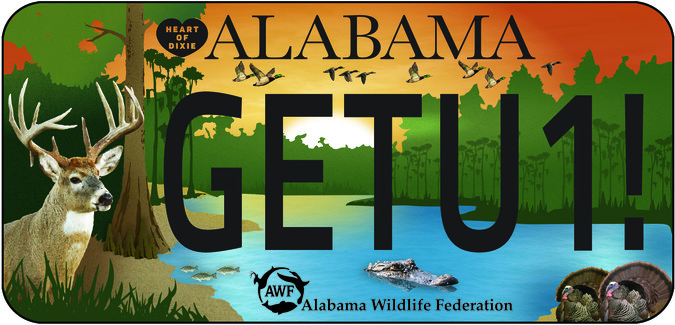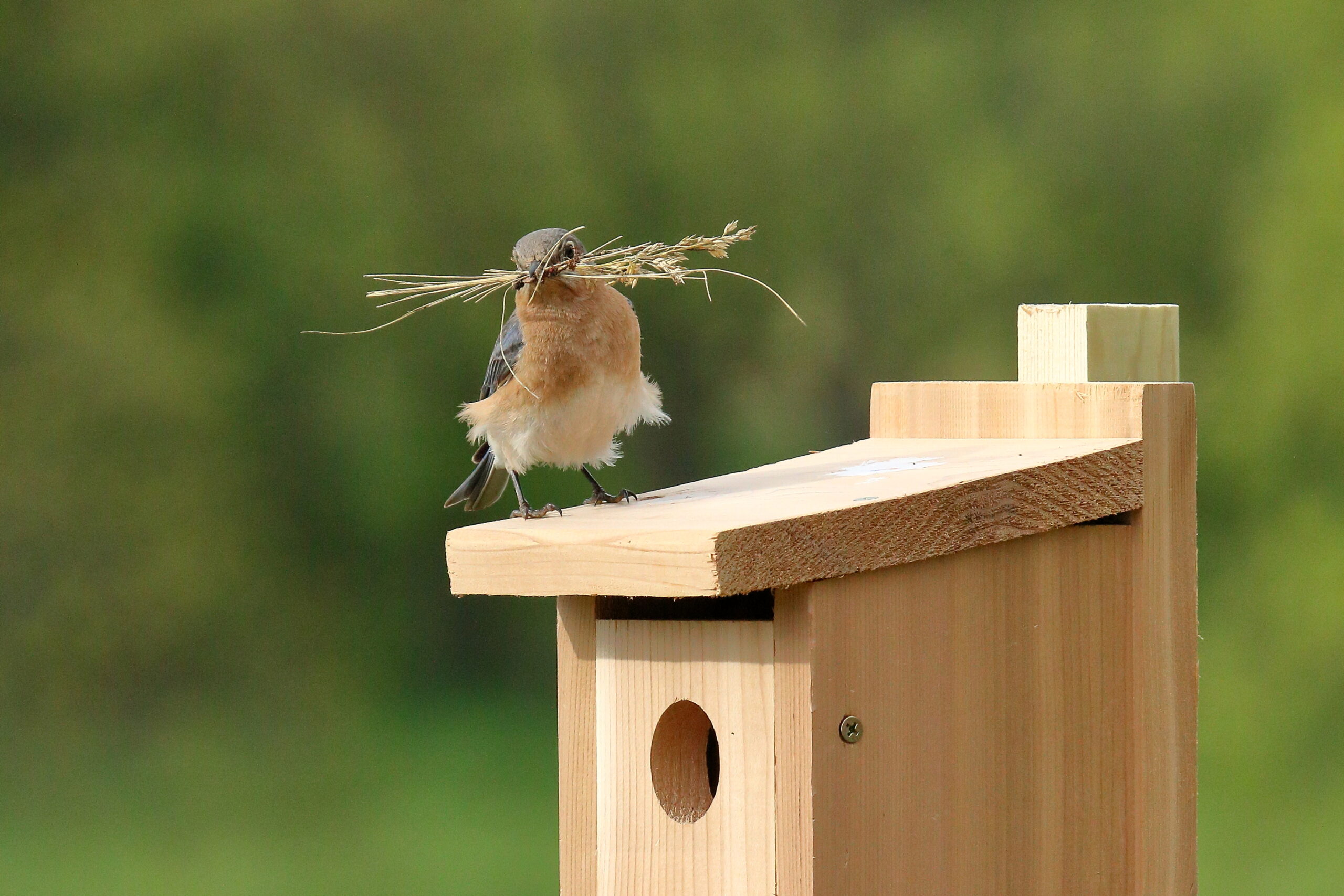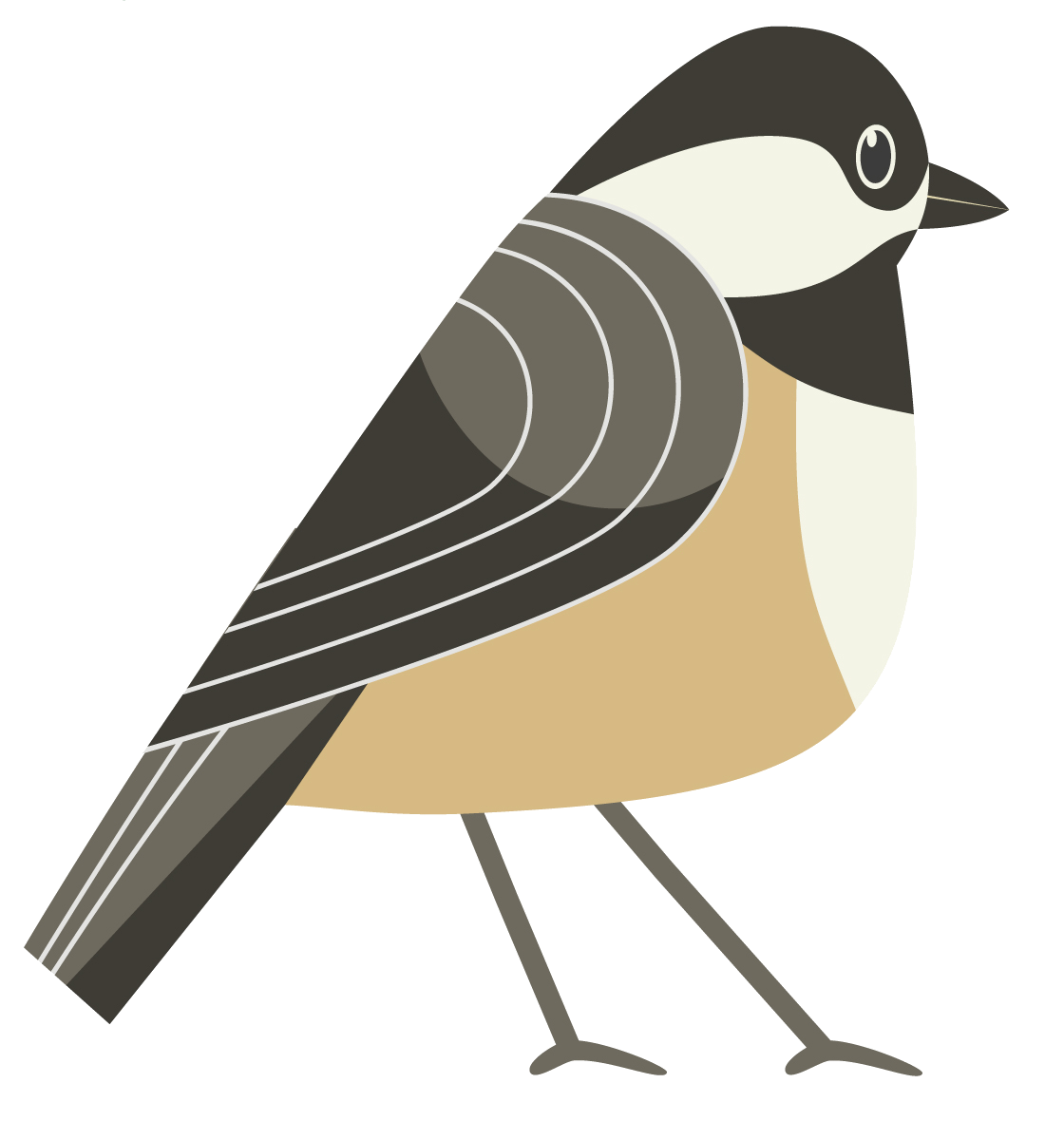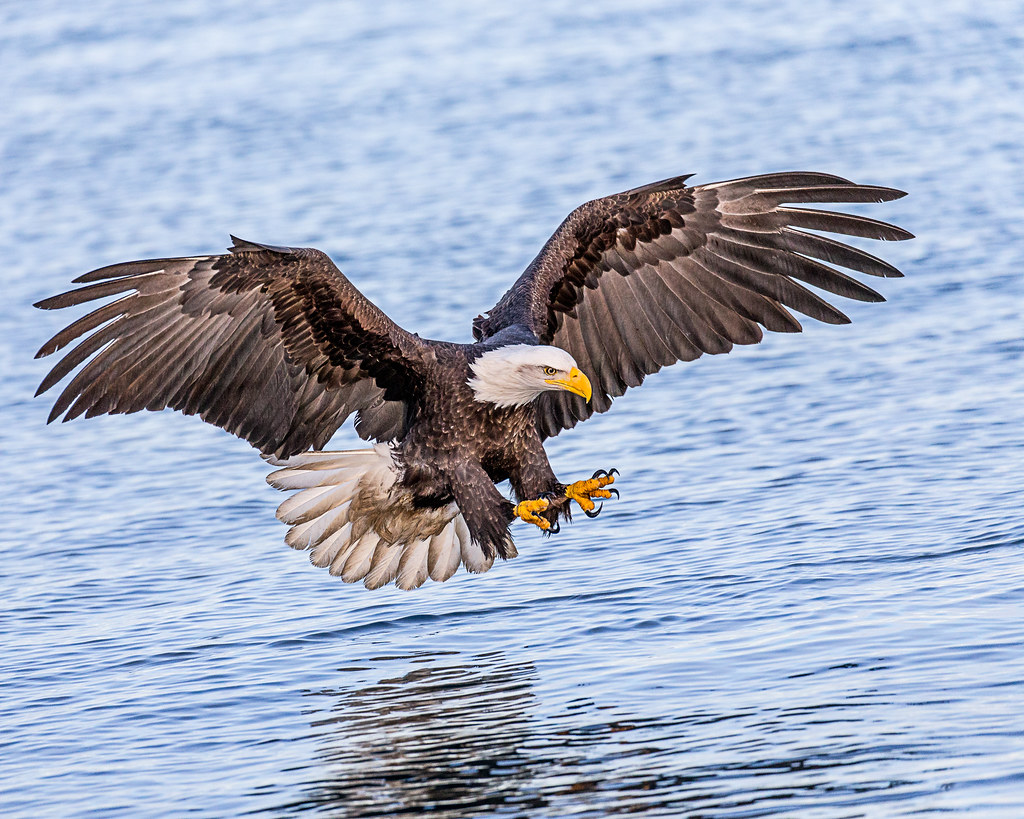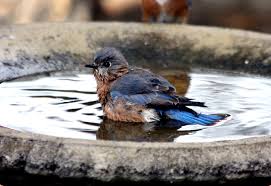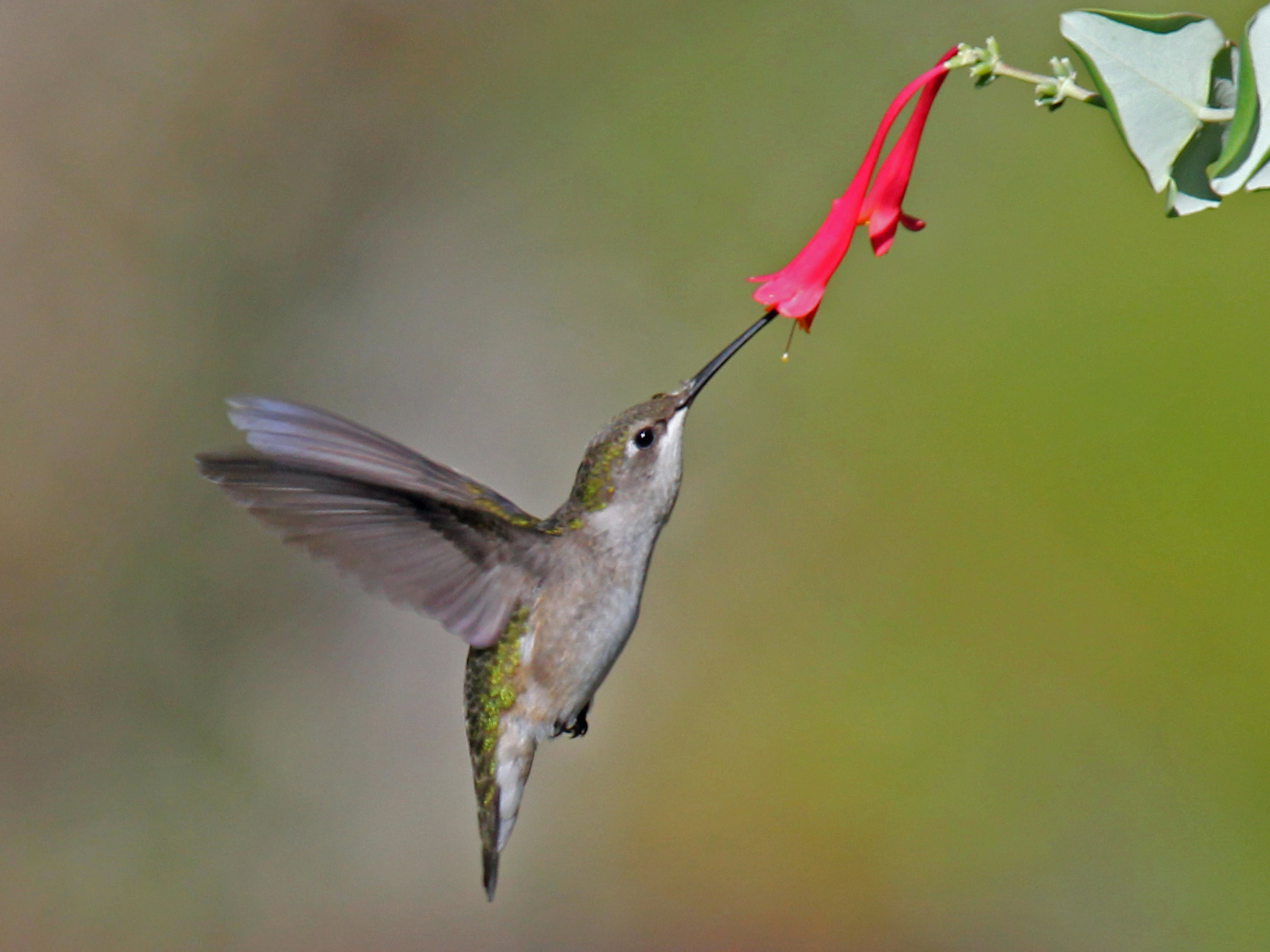
| Eastern Bluebird with Nesting Material Dreamstime Click pic to enlarge |
Investigate Songbirds and Their Habitat
A songbird sanctuary should provide habitat for local and migrating songbirds, including food, water, shelter, and a place to raise young.
| Click on the topics below to learn more! | |||
| Alabama's Songbirds | Bird Adaptations | Habitat Needs | Interesting Facts |
| Alabama's Songbirds | |||
| Alabama's Ornithological Society has documented 420 species of birds in our state! | |||
| 158 of these regularly breed in Alabama. 174 regularly overwinter in Alabama. 80 migrate through Alabama. 3 are extinct, two are extirpated (no longer occuring in our state but may occur in others), and four are non-native species. | |||
| Songbirds: | Birds of Prey: | ||
| Birds that sing a musical song
Also called "perching birds" because their feet are adapted for them to perch on branches They have three toes pointing forward and one toe pointing backward, providing balance while they perch |
Hunt other animals such as small mammals, reptiles, fish, and other birds
Often called "raptors" Hawks, falcons, eagles, osprey, and vultures Owls are nocturnal (active at night) |
||
|
Blue Jay
Wikimedia – Darren Swim Click on image to enlarge it |
Bald Eagle with Talons Out
flickr – Andy Morffew Click on image to enlarge it |
||
| Click on the names of the animals to learn more about some of the most common backyard songbirds in Alabama: | |||
| American Robin | Blue Jay | Carolina Chickadee | Carolina Wren |
| Cedar Waxwing | Eastern Bluebird | House Finch | Mourning Dove |
| Northern Cardinal | Northern Flicker | Northern Mockingbird | Red-bellied Woodpecker |
| Ruby-throated Hummingbird | Tufted Titmouse | ||
| CLICK HERE for a single PDF containing information about each of these species. | |||
| In addition to birds you may find other animals in and around your songbird garden, including butterflies like the Monarch or Black Swallowtail. You may also find bees, like the Eastern bumble bee, pollinating the flowers planted in the habitat. You may also find other insects in the moist soil or mulch like little black ants, pillbugs, and red wigglers. |
Eastern Bumble Bee |
||
| Adaptation | Advantage | Type of Bird |
| Feathers: | ||
|
1) Bright Plumage
2) Dull Plumage
3) Change of Plumage with Seasons |
1) Attracts females during courtship and mating 2) Aids in camouflage while nesting 3) Dull plumage provides camouflage in winter, and bright yellow plumage attracts mates in the spring |
1) Some male birds 2) Some Female birds 3) Goldfinch |
| Beaks: | ||
| 1) Thick & pointed 2) Large & hooked 3) Short & cone shaped 4) Long & slender 5) Short & pointed 6) Flat & wide |
1) Breaks & probes the bark of trees looking for insects 2) Tears flesh of prey that it eats 3) Cracks seeds and nuts for food 4) Probes flowers for nectar it eats 5) Works like tweezers to grab insects hiding in bark 6) Helps catch insects in air during flight |
1) Woodpecker 2) Hawk/owl/falcon 3) Finch 4) Hummingbird 5) Nuthatch 6) Flycatcher |
| Wings: | ||
| 1) Fringed at tips 2) Large and broad 3) Tapered 4) Short, blunt |
1) Silent flight 2) Aids in soaring while hunting with caught prey 3) Fast flight to catch insects and escape predation 4) Eratic flight, quick maneuver to escape by zig-zagging |
1) Owl 2) Hawk 3) Flycatcher/Swallow 4) Chick-a-dee |
| Feet: | ||
| 1) Webbed 2) Claws 3) 3 toes foreward, 1 behind 4) 2 toes foreward, 1 behind |
1) Aids in swimming 2) Grasping wen hunting prey 3) Perching on branches 4) Holding on to side of trees and climbing side of trees |
1) Duck 2) Hawks/owls/falcons 3) Cardinal 4) Woodpecker |
| Habitat Needs | |
| Your songbird garden includes food, water, shelter, and a place to raise young for a variety of songbirds. |
|
| Food: | |
| Songbirds eat berries, seeds, and nuts from native trees, shrubs, grasses, forbs (wildflowers), and vines. Those same plants attract insects for the birds to eat. Your outdoor classroom may also include bird feeders with seed, nuts, suet, sugar water, and fruit. |
Bluebird in Bath
Public Domain Pictures – Sheila Brown Click on image to enlarge it |
| Water: | |
| Songbirds need fresh water to drink. In the wild they may find this in a creek or pond, but in your outdoor classroom you may provide a bird bath or water garden. | |
| Shelter: |
Baby Bluebird in Nest |
| Songbirds will take shelter in native trees, shrubs, grasses, and evergreens in your outdoor classroom. You may also provide bird houses in which they take shelter. | |
| Places to Raise Young: | |
| The same bird houses that provide shelter also provide a place to roost, or raise young. Songbirds will also nest in cavities in trees or perched on branches of the native trees, shrubs, and evergreens in your outdoor classroom. | |
| To see a list of plants most commonly found in an outdoor classroom songbird garden, CLICK HERE! |
|
| Interesting Facts | ||
| #1: | Alabama’s state bird is the Northern Flicker, also called the “Yellowhammer”. (pictured on right) |
Northern Flicker
Pixabay – NatureLady Click on image to enlarge it |
| #2: | There are nearly 20,000 species of birds in the world! | |
| #3: | Typically, male birds are the ones that sing. They use songs to attract mates and announce their territory. | |
| #4: | The songs of many bird species are very complex and can contain dozens of notes per second. Songbirds may take as many as 30 mini breaths per second to keep up the tune. | |
| #5: | Songbirds of the same species in different regions may have slightly different songs. This is very similar to how humans that speak the same language have accents based on which region they are from. Furthermore, individual songbirds of the same species in the same region have slight differences in their songs. This allows a bird to recognize familiar songs of its neighbors versus strangers. As long as neighboring birds stay in their own territory, there is no need for defensive action. However, if the song of a stranger bird is heard, territory must be defended. | |
| #6: | Just like humans, baby birds have to listen to adults singing to pick up on the “language." They aren’t born knowing their population’s songs. | |
| #7: | If a bird migrates between different continents, it knows the songs of the birds around it in both places. A lot of birds, such as mockingbirds and thrashers, sing the songs of these other species as well as their own. This means that some birds can sing thousands of different songs. |
Ruby-throated Hummingbird
Wikimedia – Dick Daniels Click on image to enlarge it |
| #8: | Different species of birds require different amounts of food based on their body size. For example, a large raven may only eat 4% of its body weight per day, but a hummingbird can consume 100 percent of their body’s weight in sugar water or nectar every day! That’s in addition to as many as 2,000 tiny insects! | |
| #9: | Predation by cats is the number one direct, human-caused threat to birds in the U.S. and Canada. In the U.S., as many as 2.4 billion birds are killed by cats each year. To read more about this, CLICK HERE! | |
SOURCES
 |
||
|
|

